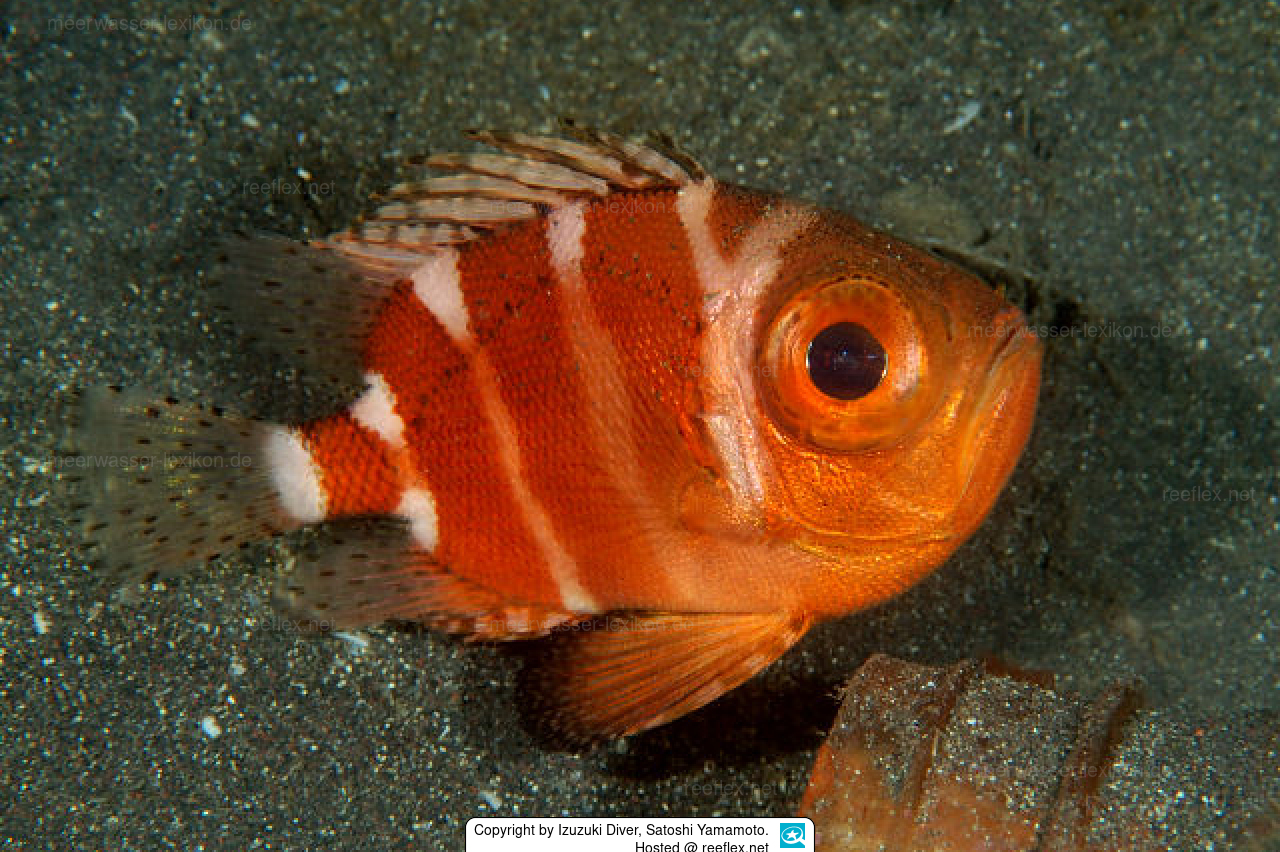Info
Adult Japanese bigeye perch inhabit deep reefs, while juveniles prefer shallower waters.
The perch is dark red to reddish-orange overall, with five distinct white or light bars on the head and body that become narrower with growth.
Its dorsal spines and the anterior half of the fin membranes are reddish-pink or pale pink.
The pelvic fin tips are dusky to black;, the soft dorsal and anal fins have dusky to black margins and pale submarginal bands in adults and subadults;
Pectoral fins are reddish to pinkish, iris is reddish to silvery.
The stripes on the body of the bigeye bass become narrower as they grow.
The perch are landed as bycatch in fisheries and kept in aquariums, especially in Japan.
The large eyes of the fish indicate that they are nocturnal fish, during the day the perch keep hidden.
Synonyms:
Polyprion japonicus Langsdorf, 1829
Priacanthus niphonius Cuvier, 1829
Pristigenys niphonius (Cuvier, 1829)
Pseudopriacanthus niphonius (Cuvier, 1829)
The perch is dark red to reddish-orange overall, with five distinct white or light bars on the head and body that become narrower with growth.
Its dorsal spines and the anterior half of the fin membranes are reddish-pink or pale pink.
The pelvic fin tips are dusky to black;, the soft dorsal and anal fins have dusky to black margins and pale submarginal bands in adults and subadults;
Pectoral fins are reddish to pinkish, iris is reddish to silvery.
The stripes on the body of the bigeye bass become narrower as they grow.
The perch are landed as bycatch in fisheries and kept in aquariums, especially in Japan.
The large eyes of the fish indicate that they are nocturnal fish, during the day the perch keep hidden.
Synonyms:
Polyprion japonicus Langsdorf, 1829
Priacanthus niphonius Cuvier, 1829
Pristigenys niphonius (Cuvier, 1829)
Pseudopriacanthus niphonius (Cuvier, 1829)







 Izuzuki Diver, Satoshi Yamamoto, Japan
Izuzuki Diver, Satoshi Yamamoto, Japan





